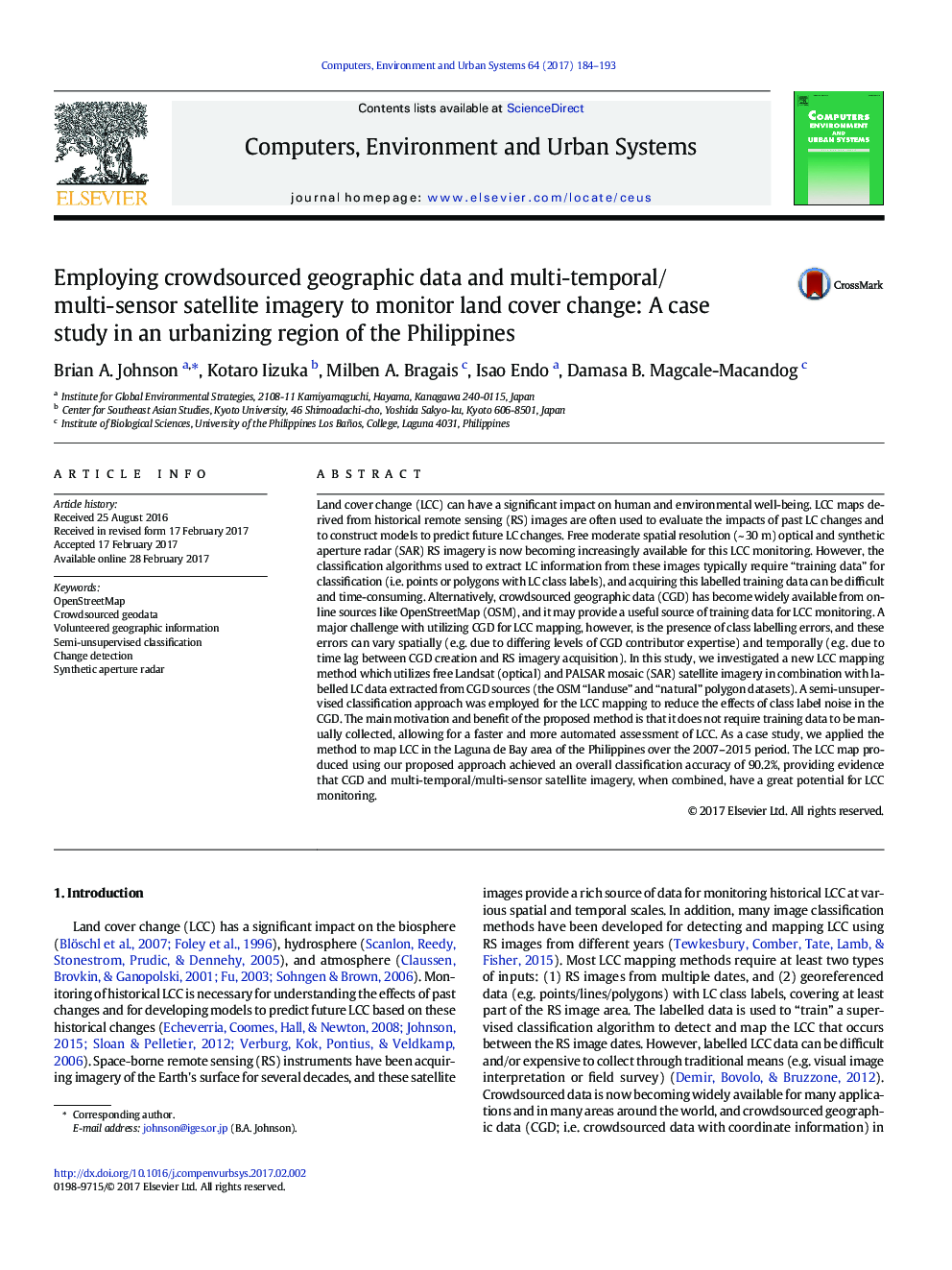| کد مقاله | کد نشریه | سال انتشار | مقاله انگلیسی | نسخه تمام متن |
|---|---|---|---|---|
| 4965147 | 1448226 | 2017 | 10 صفحه PDF | دانلود رایگان |
عنوان انگلیسی مقاله ISI
Employing crowdsourced geographic data and multi-temporal/multi-sensor satellite imagery to monitor land cover change: A case study in an urbanizing region of the Philippines
ترجمه فارسی عنوان
با استفاده از داده های جغرافیایی جمعیت و تصاویر ماهواره ای چند زمانه / چند سنسور برای نظارت بر تغییرات پوشش زمین: مطالعه موردی در یک منطقه شهری فیلیپین
دانلود مقاله + سفارش ترجمه
دانلود مقاله ISI انگلیسی
رایگان برای ایرانیان
کلمات کلیدی
موضوعات مرتبط
مهندسی و علوم پایه
مهندسی کامپیوتر
نرم افزارهای علوم کامپیوتر
چکیده انگلیسی
Land cover change (LCC) can have a significant impact on human and environmental well-being. LCC maps derived from historical remote sensing (RS) images are often used to evaluate the impacts of past LC changes and to construct models to predict future LC changes. Free moderate spatial resolution (~Â 30Â m) optical and synthetic aperture radar (SAR) RS imagery is now becoming increasingly available for this LCC monitoring. However, the classification algorithms used to extract LC information from these images typically require “training data” for classification (i.e. points or polygons with LC class labels), and acquiring this labelled training data can be difficult and time-consuming. Alternatively, crowdsourced geographic data (CGD) has become widely available from online sources like OpenStreetMap (OSM), and it may provide a useful source of training data for LCC monitoring. A major challenge with utilizing CGD for LCC mapping, however, is the presence of class labelling errors, and these errors can vary spatially (e.g. due to differing levels of CGD contributor expertise) and temporally (e.g. due to time lag between CGD creation and RS imagery acquisition). In this study, we investigated a new LCC mapping method which utilizes free Landsat (optical) and PALSAR mosaic (SAR) satellite imagery in combination with labelled LC data extracted from CGD sources (the OSM “landuse” and “natural” polygon datasets). A semi-unsupervised classification approach was employed for the LCC mapping to reduce the effects of class label noise in the CGD. The main motivation and benefit of the proposed method is that it does not require training data to be manually collected, allowing for a faster and more automated assessment of LCC. As a case study, we applied the method to map LCC in the Laguna de Bay area of the Philippines over the 2007-2015 period. The LCC map produced using our proposed approach achieved an overall classification accuracy of 90.2%, providing evidence that CGD and multi-temporal/multi-sensor satellite imagery, when combined, have a great potential for LCC monitoring.
ناشر
Database: Elsevier - ScienceDirect (ساینس دایرکت)
Journal: Computers, Environment and Urban Systems - Volume 64, July 2017, Pages 184-193
Journal: Computers, Environment and Urban Systems - Volume 64, July 2017, Pages 184-193
نویسندگان
Brian A. Johnson, Kotaro Iizuka, Milben A. Bragais, Isao Endo, Damasa B. Magcale-Macandog,
